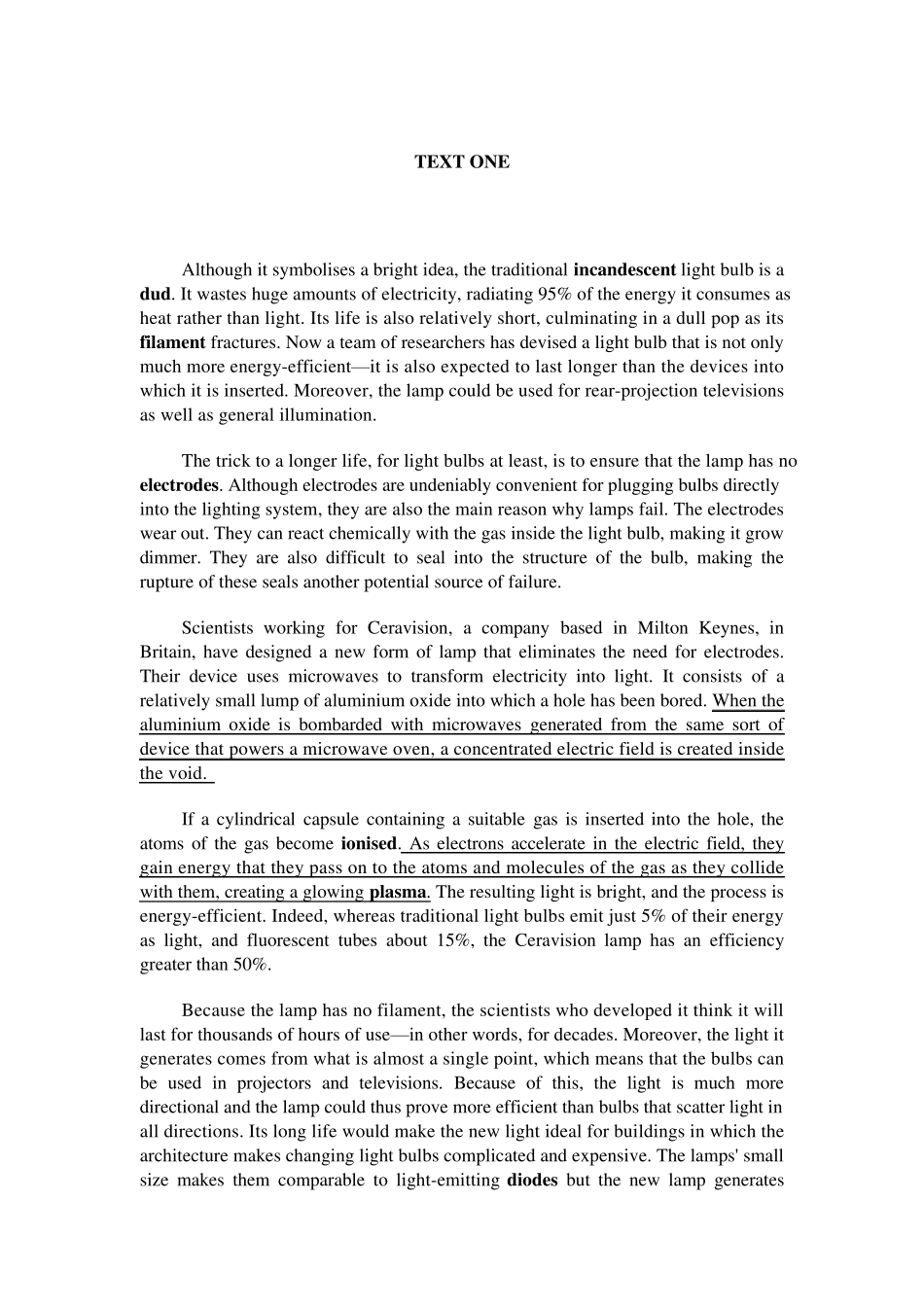TEXT ONE Although it symbolises a bright idea, the traditional incandescent light bulb is a du d. It wastes huge amounts of electricity, radiating 95% of the energy it consumes as heat rather than light. Its life is also relatively short, culminating in a dull pop as its filament fractures. Now a team of researchers has devised a light bulb that is not only much more energy-efficient—it is also expected to last longer than the devices into which it is inserted. Moreover, the lamp could be used for rear-projection televisions as well as general illumination. The trick to a longer life, for light bulbs at least, is to ensure that the lamp has no electrodes. Although electrodes are undeniably convenient for plugging bulbs directly into the lighting system, they are also the main reason why lamps fail. The electrodes wear out. They can react chemically with the gas inside the light bulb, making it grow dimmer. They are also difficult to seal into the structure of the bulb, making the rupture of these seals another potential source of failure. Scientists working for Ceravision, a company based in Milton Keynes, in Britain, have designed a new form of lamp that eliminates the need for electrodes. Their device uses microwaves to transform electricity into light. It consists of a relatively small lump of aluminium oxide into which a hole has been bored. When the aluminium oxide is bombarded with microwaves generated from the same sort of device that powers a microwave oven, a concentrated electric field is created inside the void. If a cylindrical capsule containing a suitable gas is inserted into the hole, the atoms of the gas become ionised. As electrons accelerate in the electric field,...


